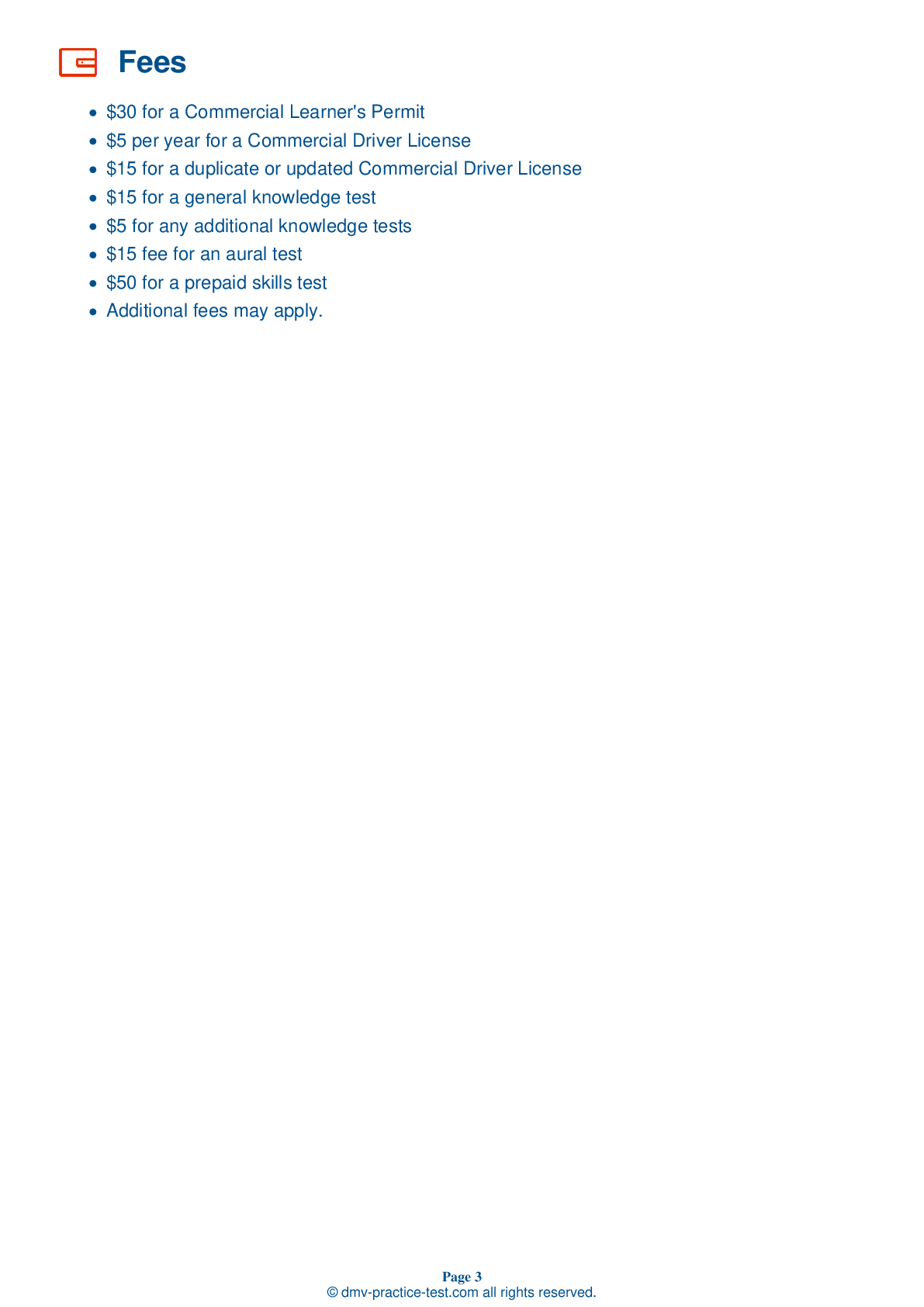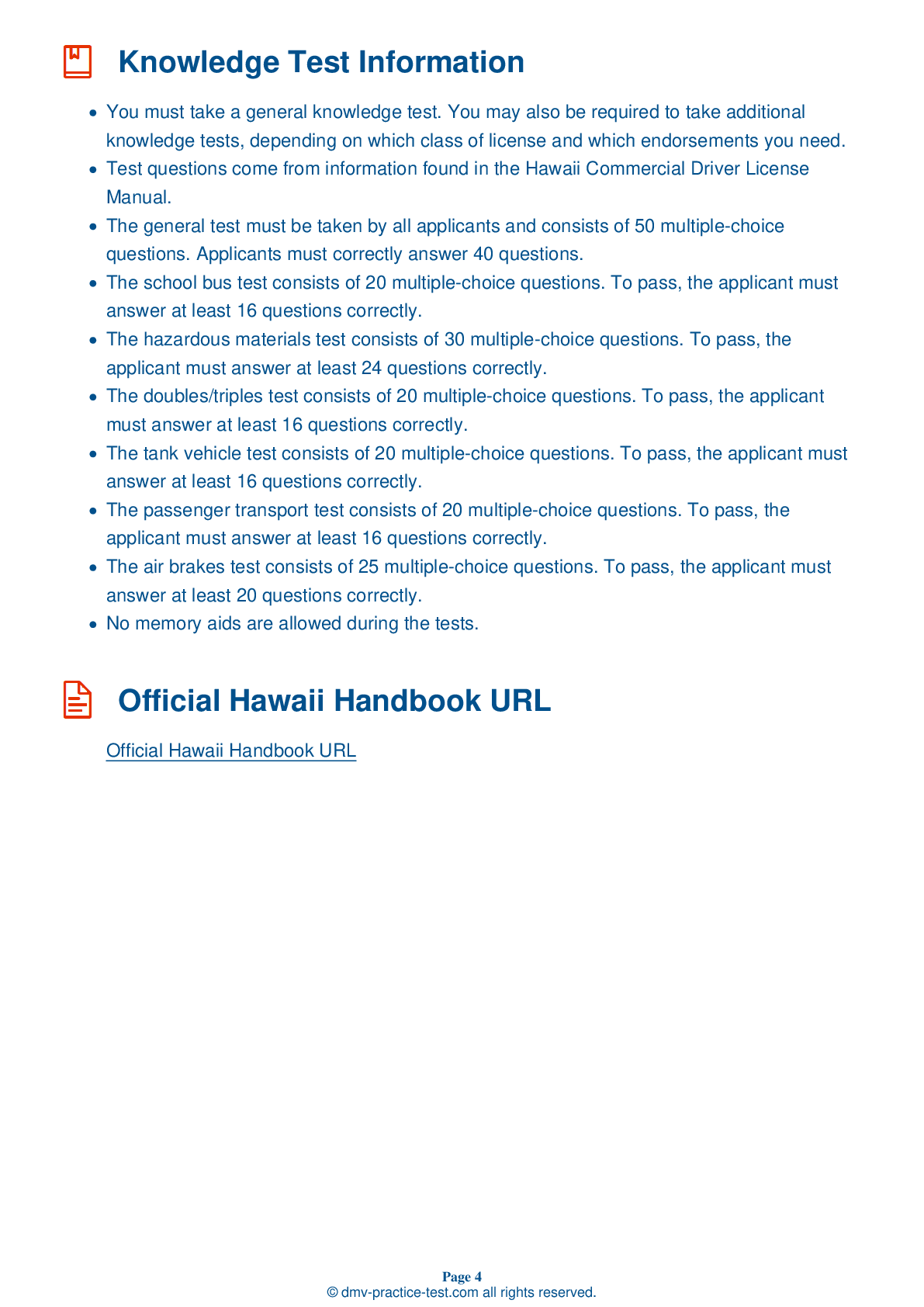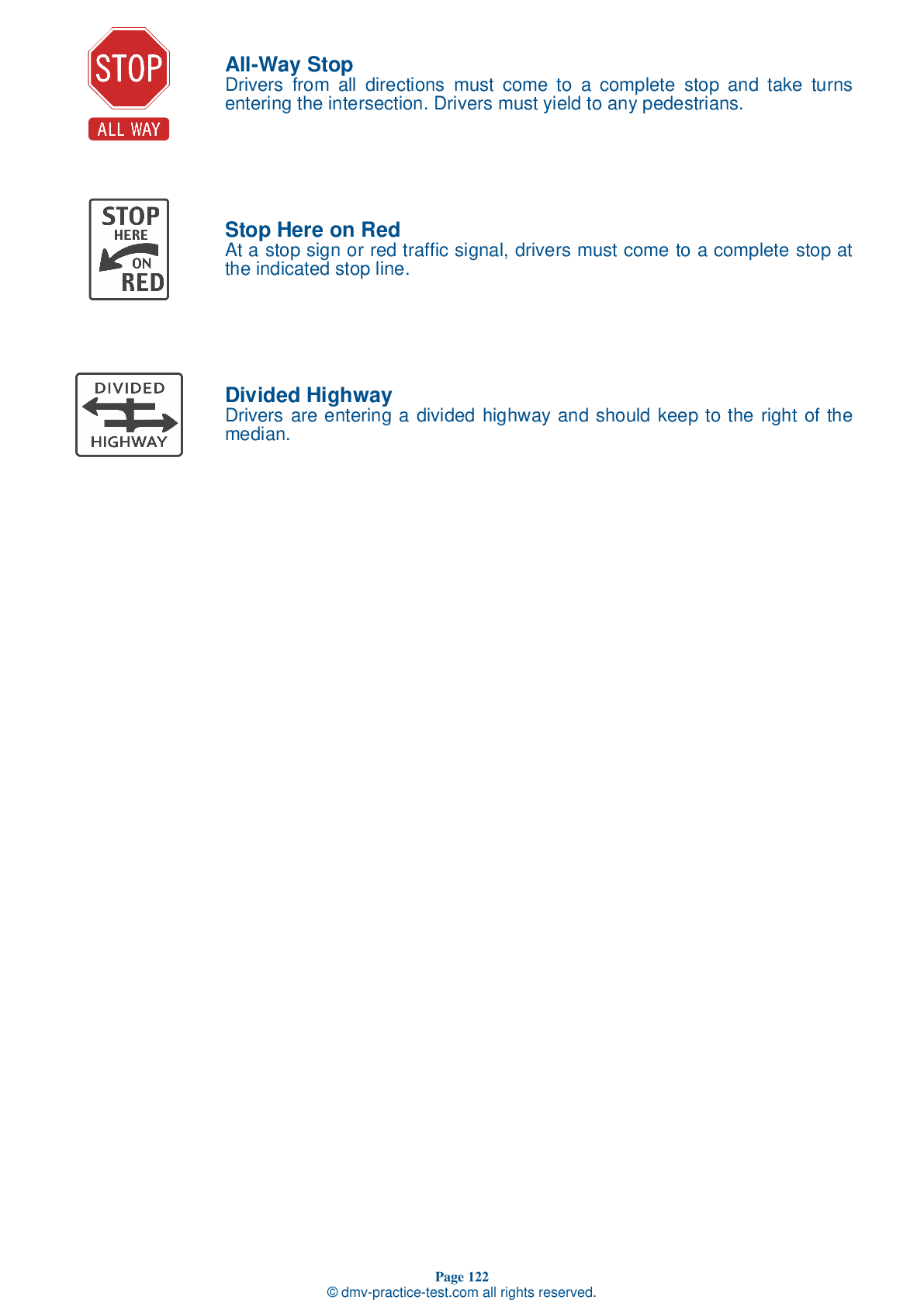Double Triple Test | Hawaii 2025 #2 Page 3 of 3
Train for FREE with our Hawaii CDL double triple practice test online. The official exam test consists of several obligatory parts, with all of them checking your knowledge of different blocks of road rules. If you need to obtain a HI CDL double triple license in 2025, practice as much as possible. Free sample tests published on our website will help you check and improve your knowledge and boost your grades. Please bear in mind that DMV requirements may vary from state to state.
15 . The leakage rate for a single vehicle with air brakes should be no more than ____ in one minute during a static leakage test.
When performing a static leakage test on a single vehicle with air brakes, the leakage rate should be no more than 2 psi in a minute. If the air leaks from the air brake system at a quicker rate, the vehicle should not be driven because something likely needs to be repaired.
16 . Slow down and be extra careful:
Slow down and be especially careful when driving in and around work zones, in places where the pavement drops off sharply at the edge of the road, when foreign objects are present on the road, and on freeway on- and off-ramps.
17 . ____ is an example of required emergency equipment.
All commercial motor vehicles are required to be equipped with the proper emergency equipment. This may include spare electrical fuses; three red reflective triangles, six fuses, or three liquid burning flares; and at least one properly charged and rated fire extinguisher.
18 . When backing with a trailer, turning toward the driver’s side is encouraged because:
When driving in reverse, it is always recommended that a driver backs their vehicle toward its left side. This will allow the driver the best possible view of the rear of their vehicle.
19 . When braking with ABS, you should:
When operating a vehicle with an Anti-Lock Braking System (ABS), you should apply your brakes in the same manner as you would if operating a vehicle without ABS.
20 . If driving so slowly that you could impede other drivers, you should:
If you must drive so slowly that you will impede the flow of traffic, you should turn on your four-way flashers to alert drivers behind you (as long as local laws allow the use of flashers).
See the exact questions that will be on the 2025 Hawaii DMV exam.
99.2% of people who use the cheat sheet pass the FIRST TIME
Lillian MCcranie explains how our CDL study guide was helpful in passing the exam and recommends it to everyone.
Cameron tells us how he purchased the CDL exam, and found it to be a useful tool which helped him pass the exam and find a job.



